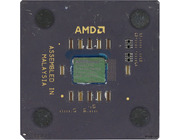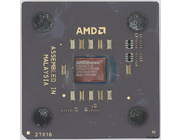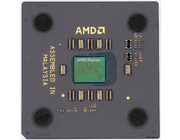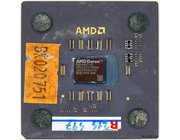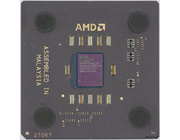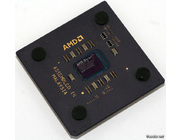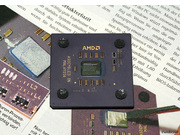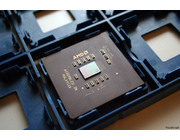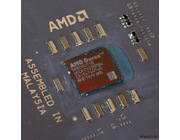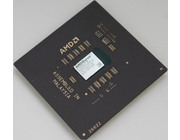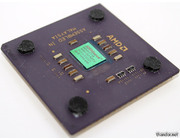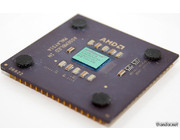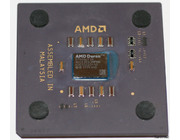| Released on 19 June, 2000 as budget CPU. It is based on the AMD Athlon 'Thunderbird' but has less L2-cache and a slower front-side-bus. Because the Duron had a big L1-cache (128KB, just like the Athlon) it still performed very good. AMD compared these features to Intel's Celeron on their product page to emphasize that the AMD Duron was the better product (and despite the propaganda, the Duron clearly was the better product of the two). The 'Spitfire' was only available in the then new ceramic S462 package. Spitfire is the first generation and is succeeded by the Duron 'Morgan'. | 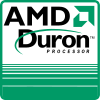 |
I have three AMD Duron 700's in my collection. This particular CPU uses a 1.5V voltage to operate which is 0.1V lower than usual. Most 700's I've seen run at 1.6V. However, there is another exception: one that runs with just 1.4V! ![]() . > Read more
. > Read more
A somewhat uncommon AMD Duron 700 because of it's low vCore. It only needs 1.4V where most Duron 700's were shipped out with a 1.6V requirement.
AMD started with the first Duron's at 600MHz that often needed 1.5V or 1.6V. As the clock-frequency went up the need for a bit more vCore also went up. Most 950MHz or slower models need 1.6V or 1.65V. A few exceptions however since the best samples of a CPU-core need less power to operate and at the time AMD apparently tested their chips to see how low they could (safely) go.
Regarding the 'best samples': being able to use a low vCore (within the same line of chips) is in a way identical to overclocking. The best samples can usually run with a lower vCore or run at a higher clockfrequency with the, for that line of chips, regular vCore. In manufacturing a CPU the chips that are sliced from the inner circle of the wafer are usually better than those on the outside. When running either a low vCore or higher clockfrequency (with increased vCore) you'd want the chip that came from the inner circle of the wafer ![]() .
.
Of course: overclocking (and undervolting) is still a lottery. Also the architecture and manufacturing process of a chip will determine how it will overclock. Some architectures can handle an extremely low or high vCore better than others. > Read more
A clean looking AMD Duron. Note that it never had the four rubber pads on each side to prevent the heatsink from tilting during installation.
Mechanical samples usually appear like a real CPU but often don't work. I never tested mine (there is a risk of burning the CPU and/or motherboard) but it looks like it has a real Duron 'Spitfire' core. Some mechanical samples don't have real or working CPU-cores inside.
The mechanical samples are used to test dimensions of the motherboard, socket and especially cooling systems. Manufacturers of cooling systems have to make sure that the pressure on the CPU 'die' is correct and that cooling systems have proper airflow to ensure cooling of motherboard components like voltage regulators. > Read more
A regular budget CPU in it's time. Good bang for buck. > Read more
Just a normal Duron that fills up the gap between the 650 and 750 models.
Notice that this one doesn't have the four black pads in the each corner. Because I can see discoloration I know these pads were in place at one time. Why they are removed is unknown to me. > Read more
A lot like this Duron 600 but 50MHz faster at a lower voltage. Technically (production wise) this chip is probably better and thus runs at a lower vCore (1,5V instead of 1,6V). > Read more
This is the slowest Duron AMD ever released. Technically it's an Athlon 'Thunderbird' but with less L2 cache. > Read more
The AMD Duron 'Spitfire'. Quite a performer for a low price back then! The K7 architecture runs quite fine with very little cache. Because the (big!) L1 cache is inclusive the CPU still performs good. Cache intensive applicaties such as games are better off on an Athlon, though.
In the angled picture the modifications on the bridges on the CPU can clearly be seen. By closing the L1 bridges the multiplier will be unlocked. Closing all L11 bridges will result in 1,85V vCore. Tweaking and overclocking with a pencil, what do you want more? ![]() > Read more
> Read more
